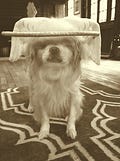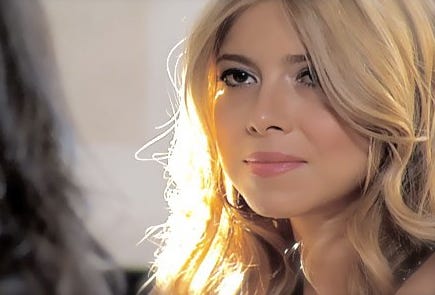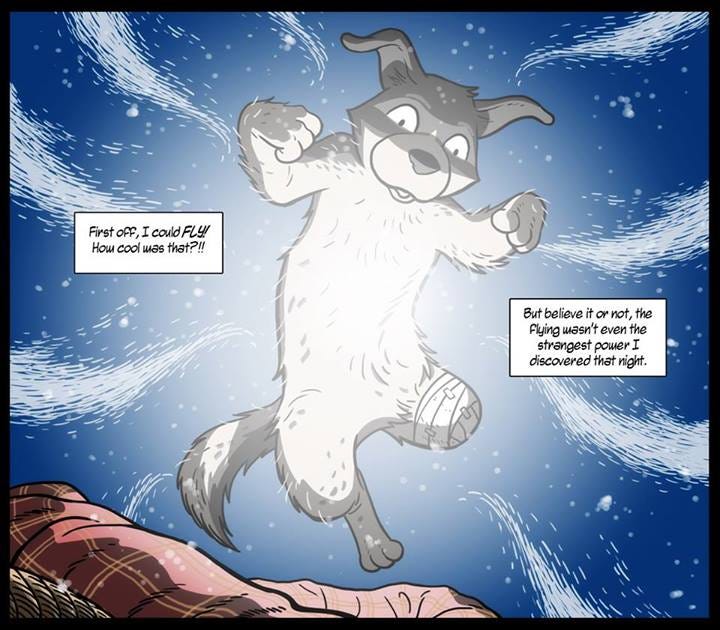A Conversation with Simone Reyes on Rescuing Disabled Companion Animals
Interview With Simon Reyes (Musician & Former Assistant To Russell Simmons)
By Jordan Schaul | National Geographic | November 1, 2013
This month, while working on my black cat book, I’ve been reminded of “Homer” the blind black cat. If you recall, “Homer” was the inspiration behind the New York Times Best Selling book Homer’s Odyssey.
October is a rough month for black cats, in part because of cat lore and their historic association with witchcraft and Halloween. But truly every month is a rough month for black cats as they are the last adopted from shelters. Sadly, Homer was also blind. It occurred to me that every month is also often a rough month for disabled pets. If these animals are lucky enough to get placed in shelters, they are probably not commonly adopted, but honestly, I don’t know.
So I turned to Simone Reyes, long-time assistant to Russel Simmons, an author of two books on companion animals and a celebrity in her own right. She also has two disabled dogs. Other celebrity animal activists have referred to Simone as a hardcore advocate, which is a distinction she probably cherishes. I got a chance to meet the bi-coastal resident while she was in California attending Stray Cat Alliance’s recent fundraiser for cats in need.
Interview:
Jordan: From unilateral double and diagonal double amputee canines to blind-deaf cats, there are, I imagine thousands of disabled pets, many of which are capable of living full and happy lives just like disabled people. The problem, I suspect, is that not everyone realizes this or is willing to give them a chance.
Can you talk about the number of special needs animals in need of homes?
Simone: Special needs animals are in dire need of forever homes. With the Humane Society of the US estimating that shelters care for 6- 8 million dogs and cats each year in the US, with 3-4 million never making it out alive, its no surprise that animals considered “less adoptable” with special needs issues are the first to be euthanized. People often want the playful puppy or the fluffy kitten and overlook any animal that doesn’t fit this vision in their mind. While it is wonderful for every animal to be adopted, since kittens and puppies are euthanized as well, I am hopeful that the more the media draws attention to how amazing and loving special needs animals can be this will start to change.
Jordan: Because of my work with geriatric wild animals in captivity and disabled people (both mentally and physically challenged), I was once invited to participate in a workshop for GE innovators to help design new appliances to make the lives of disabled individuals somewhat easier. Today, the commercial market provides many amenities for people and animals with physical disabilities, but having my own learning disabilities, I know that mental and cognitive deficits are sometimes more difficult to assess and assist with. Would you say this is true with regard to companion animals?
Simone: As with people, animals often struggle with dementia as they age and some animals have aggression issues, and separation anxiety, etc.
Jordan: I hear your immediate family is comprised of two dogs with special needs. Can you tell me their stories?
Simone: I have had special needs fur kids for as long as I can remember. My dog Stevie was a pit mix and born deaf. I found her in Coney Island one fine summer day when I thought I was just going to ride the Cyclone. She was named after Stevie Nicks and lived to be almost seventeen years old. She was the first dog in NYC to get Stem Cell Therapy at the Animal Medical Center under the expert care of Dr. Pamela Schwartz. She also had a wonderful oncologist there Dr. Maria Camps. Pikachu was a chihuahua mix who had three legs. I never saw her let her handicap rob her of a day of joy in all the years I was lucky enough to share with her. My Cassidy was a dachshund mix and came from the shelter as a package deal with Pikachu. I thought I was going to meet Pikachu and ended up with the loud, crazy dog who shared her cage. They had come into the system together but we’re going to be adopted out separately. I could tell Cassidy had some emotional issues at the shelter so of course, I took him home as well. While he never overcame all of his issues, with love and routine he lived a full and joyful life. He was finally able after a few years to understand that he had found himself a forever home and would never be thrown away again. They have since passed away as have my beloved cats – three of whom were black and therefore harder to adopt out due to old superstitions about them being bad luck. Currently, I have one dog Hubbell Yoda who is completely blind and had his eyes removed about two years ago. When he came into the shelter system he was one of the lucky ones. Even though he was a senior of nine years old, he is a pure-bred Japanese Chin and was quickly rescued by an amazing group JCCARE. They paid for his dental, hernia operation and had his eyes removed after determining that untreated glaucoma had left him recently blind and in pain. I am also taking care of a senior dog Daisy Mae while her Mom is tied up with work for the month of October. Daisy was a victim of neglect and was rescued by the kind folks at Beagle Freedom Project. She is, by my estimation, probably about 80% blind and completely deaf. Having Hubbell Yoda and Daisy bumping into each other in the house recently has been a good exercise in patience for my guy Hubbell who is not typically good with other dogs. He is trying his best to be a good host. Every day with Daisy has reinforced to me what a gift it is to be able to support an animal through its twilight years.
Jordan: Do people often relinquish special needs animals or elect to euthanize them in this day and age? I would hope our society has become more compassionate?
Simone: Sadly, yes people relinquish special needs animals all too often whether they become special needs companions due to health issues, an accident, or simply from the aging process. There is nothing more heart-crushing than seeing the look of confusion and terror on a senior dog or cat’s face when they are being left at a cold, loud shelter. It’s the most heartless decision a guardian can make (and the most selfish). Perhaps age has made their companion incontinent or perhaps they have developed some dementia and bark at odd hours or pace at night. I always remind people one day we will all end up in Depends if we live that long. A person should never adopt an animal unless they are prepared to see that relationship through until the end.
Jordan: From my zoo and sanctuary work, I know that at least among facilities open to the public, that animals with disabilities used to be placed off-display. Today, these institutions have become more progressive and they often highlight the fact that some residents have disabilities. In many cases, they go to great lengths to help integrate disabled animals into social groups. For instance, I recall a swamp monkey amputee at the San Diego Zoo. She was also a doting mother and for her own welfare, she needed the social attention of conspecifics more than any help she needed to function normally. Today her story is used to inspire visitors with disabilities from around the world along with many other animals with special needs at the Zoo. Do you think as a society we do enough to educate the public about people and animals with special needs?
Simone: I don’t think there are enough resources being advertised for people to go to when their animal becomes handicapped or a senior. However, there are tremendous resources available to help care for aging or special needs animals online and even at many pet stores. There are slings available to help animals get up when arthritis makes it difficult. Muffin’s Halo company provides blind dogs with a kind of walking stick they can wear as a harness so as not to bump their heads into furniture, special harnesses for tripod dogs, you name it, it is available- the web is a great resource. More than anything special needs animals need love, which is free.
Jordan: I contend, based on my experience with geriatric populations of animals and people, that those of us who are fortunate enough to live long enough, will eventually experience the plight of those who have dealt with special needs at a younger age. We don’t seem to talk about this much nor do we prepare people or animals for the inevitable. Do you have any insight on this?
Simone: Every year, an estimated 4 million older Americans are victims of physical, psychological, or other forms of abuse and neglect. In this culture, we don’t care for our elders whether they be humans or animals in the way that we should as a population. As we know, many are never reported. If these are our statistics of human abuse it’s no surprise animals fare far worse. Dog and cat guardians (and rabbits, birds, rodents, etc should be mentioned as well) need to look at the circle of life as a natural part of our journey. Each of us will face a time when we will need help and compassion when we become seniors nearing the end of our journey. It is a spiritual and life-affirming gift to be able to shepherd an animal into its end years. It is our duty as dog/ cat moms. When we adopt an animal it is for life… even when it’s hard. And even when it is difficult this I can guarantee, when it does finally come time to let them go to spare them end-stage suffering that cannot be controlled most people would do anything to have their companion back to clean up after them just one last time.
Jordan: What can we do now to help animals with special needs?
Simone: We can adopt special needs animals and tell our friends and family to do the same. Petfinder has a great option on their site where you can specifically be matched with a special needs or senior animal in your zip code. Once people open their homes and hearts to a special needs/handicapped/senior animal they will be reminded daily that no matter what our physical or emotional limitations are we can survive it. Just being in the presence of a special needs companion animal provides the best medicine for our soul. The way that these animals take whatever life has handed to them and live in the moment is a testament to all that is good in the world. Watching an animal who may not be able to run as fast as the others but still find complete joy in playing with a toy, or seeing a blind dog confidently maneuver around their home after they have mapped it out with their other senses are moments that are hard to forget. Animals teach us what is found in almost every scripture… live in the now. They don’t worry about the future or get stuck in the past, even those that have been abused can and will flourish if given time, patience, guidance, and love. Animals are our teachers and special needs animals are often the best versed in communicating to us those vital life lessons. What a blessing it is to share our lives with them.
Update: November 17, 2013 (Piggy’s Tale — Comic strip story of a disabled canine)
“THE EXCITING PIGGY’S TALE COMIC WILL ILLUSTRATE THE ORIGINS OF THESE FASCINATING HEROES OF THE STREETS OF NYC, AND SHOW THE VILLAINS THIS DOGNAMIC DUO TAKE ON.”
http://piggytale.com/
ABOUT NATIONAL GEOGRAPHIC SOCIETY
The National Geographic Society is a global nonprofit organization that uses the power of science, exploration, education and storytelling to illuminate and protect the wonder of our world. Since 1888, National Geographic has pushed the boundaries of exploration, investing in bold people and transformative ideas, providing more than 14,000 grants for work across all seven continents, reaching 3 million students each year through education offerings, and engaging audiences around the globe through signature experiences, stories and content. To learn more, visit www.nationalgeographic.org or follow us on Instagram, Twitter and Facebook.
MEET THE AUTHOR
Jordan Carlton Schaul With training in wildlife ecology, conservation medicine and comparative psychology, Dr. Schaul's contributions to Nat Geo Voices have covered a range of environmental and social topics. He draws particular attention to the plight of imperiled species highlighting issues at the juncture or nexus of sorta situ wildlife conservation and applied animal welfare. Sorta situ conservation practices are comprised of scientific management and stewardship of animal populations ex-situ (in captivity / 'in human care') and in-situ (free-ranging / 'in nature'). He also has a background in behavior management and training of companion animals and captive wildlife, as well as conservation marketing and digital publicity. Jordan has shared interviews with colleagues and public figures, as well as editorial news content. In addition, he has posted narratives describing his own work, which include the following examples: • Restoration of wood bison to the Interior of Alaska (As Animal Curator at Alaska Wildlife Conservation Center and courtesy professor at the University of Alaska) • Rehabilitation of orphaned sloth bears exploited for tourists in South Asia (While executive consultant 'in-residence' at the Agra Bear Rescue Center managed by Wildlife SOS) • Censusing small wild cat (e.g. ocelot and margay) populations in the montane cloud forests of Costa Rica for popular publications with 'The Cat Whisperer' Mieshelle Nagelschneider • Evaluating the impact of ecotourism on marine mammal population stability and welfare off the coast of Mexico's Sea of Cortez (With Boston University's marine science program) Jordan was a director on boards of non-profit wildlife conservation organizations serving nations in Africa, North and South America and Southeast Asia. He is also a consultant to a human-wildlife conflict mitigation organization in the Pacific Northwest. Following animal curatorships in Alaska and California, he served as a charter board member of a zoo advocacy and outreach organization and later as its executive director. Jordan was a member of the Communication and Education Commission of the International Union for the Conservation of Nature (CEC-IUCN) and the Bear Specialist Group of the IUCN Species Survival Commission (BSG-SSC-IUCN). He has served on the advisory council of the National Wildlife Humane Society and in service to the Bear Taxon Advisory Group of the Association of Zoos and Aquariums (AZA Bear TAG). In addition, he was an ex officio member of the council of the International Association for Bear Research and Management.





